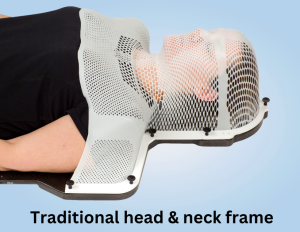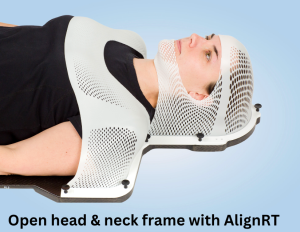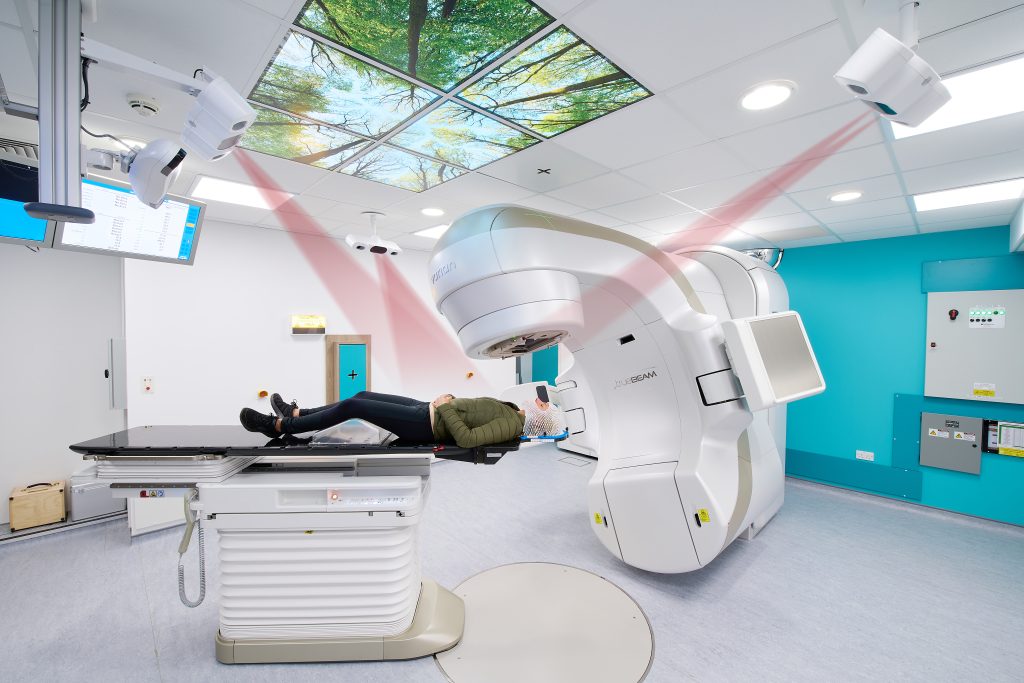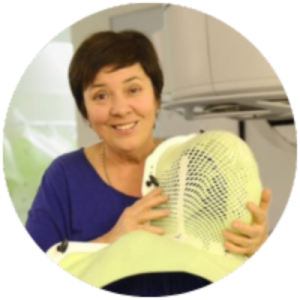Head and Neck Cancer Treatment
AlignRT® is a technology that increases treatment accuracy & patient comfort during radiation therapy.
Head and Neck cancer treatments traditionally have relied on closed masks to set up and keep patients in the correct position during radiation therapy. Some patients may have difficulty tolerating these masks due to anxiety or claustrophobia. Studies show that patients find the use of closed face masks to be one of their worst experiences during radiation therapy¹, with nearly half (43%) reporting “clinically significant anxiety” before their mask-making session².
With its sub-millimetric accuracy, plus its ability to stop the radiation beam if a patient moves out of position, AlignRT is a surface guided radiation technology that enables accurate treatments with open-faced masks.
Open-faced masks have been proven as effective as closed-faced masks and have been shown to be preferred by most patients.¹. They are made of the same material and manufactured in the same manner as closed masks, but the nose, eyes, parts of the forehead, and cheekbones are left open.
Why should I choose a center with AlignRT?
AlignRT is a safety monitoring system that tracks your body’s surface during your treatment, ensuring sub-millimetric accuracy. This helps protect surrounding organs and healthy tissue, reducing the risk of side effects.
Unlike traditional radiation technology, AlignRT is capable of stopping treatment if you move out of the desired treatment position.
Radiation therapy, when guided by AlignRT, may also eliminate the need for permanent tattoos and marks during treatment.
PATIENT SPOTLIGHT
Karen Holt, Throat Cancer Survivor and Patient Advocate
Julie McCrossin, Oropharyngeal Cancer Survivor and Patient Advocate
“The new technology for radiotherapy for Head and Neck Cancer patients looks groundbreaking.
Seeing the open face masks and knowing how different the experience will be for new head and neck cancer patients is tremendous.
Patients will no longer feel claustrophobic or extremely uncomfortable as their face swells from treatment because the masks will be open. My journey would have been so much easier and less traumatic if I had had a mask like this. I probably wouldn’t feel so trapped under the full impact of the green plastic which pressed against my face pushing it down. It can only make for a calmer experience during what is already an awful journey to be going through. It’s hard for others to imagine unless you have been through this.”
“I will be forever grateful for the radiation therapy team that saved my life with precisely targeted treatment. Ten years after my treatment for stage 4 HPV-related oropharyngeal cancer, I can speak, swallow and live a normal life. However, my 33 days in full-face mask was the most traumatic experience of my life. New styles of open-faced mask and better education before the patient’s first treatment will improve the patient’s experience and physiological recovery. Thank you for this innovation!”
References
1. Li, G. et al. Migration from full-head mask to “open-face” mask for immobilization of patients with head and neck cancer. J Appl Clin Med Phys 14, 243-254, doi:10.1120/jacmp.v14i5.4400 (2013).
2. Wiant, D. et al. A prospective evaluation of open face masks for head and neck radiation therapy. Pract Radiat Oncol, doi:10.1016/j.prro.2016.02.003 (2016).






